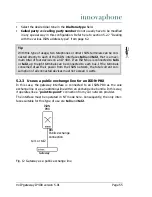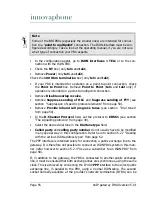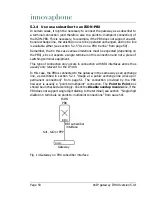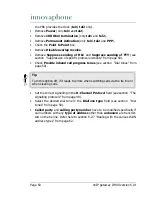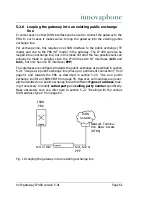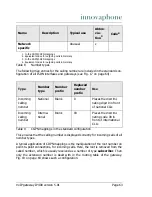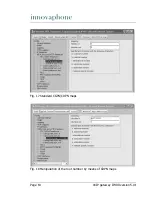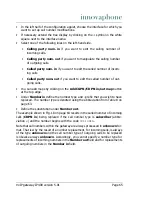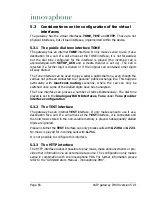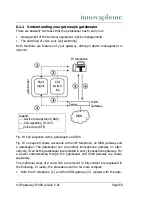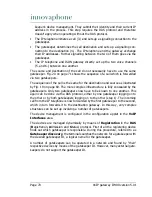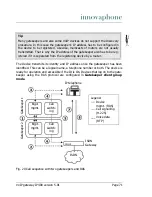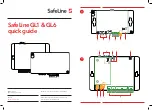
Page 56
VoIP gateway IP400 version 5.01
• In the configuration applet, go to
ISDN interfaces > TEL1
or to the con-
nection with the ISDN PBX.
• Check the
NT
box (only
tel1
and
tel2
).
• Remove
Power
(only
tel1
and
tel2
).
Check the
100 Ohm termination
box (only
tel1
and
tel2
).
• If your PBX is intended for operation on a point-to-point connection, check
the
Point to Point
box. Remove
Point to Point
(
tel1
and
tel2
only) if
operation is intended on a point-to-multipoint connection.
• Remove
Disable overlap receive
.
• Remove
Suppress sending of HLC
and
Suppress sending of FTY
(see
section “Suppression of specific protocol elements” from page 50).
• Remove
Provide inband call progress tones
(see section “Dial tones”
from page 50).
• In the
D-Channel Protocol
field, set the protocol to
EDSS1
(see section
“The signalling protocols” from page 49).
• Select the desired dial tone in the
Dialtone type
field.
•
Called party
and
calling party number
do not usually have to be modified
in any special way in this configuration. Refer here to section 5.2.7 “Dealing
with the various ISDN address types” from page 62.
The PPP interface is intended solely for connecting a public exchange line to the
gateway. It is therefore not possible to connect an ISDN PBX system in this man-
ner (refer however to section 5.2.4 “Use as a subscriber to an ISDN-PBX” from
page 58).
If, in addition to the gateway, the PBX is connected to another public exchange
line, it must be ensured that both exchange lines are synchronous, using the same
clock. This is achieved by connecting the IP 400
PPP
interface to the direct public
exchange line, in parallel to the PBX, using a normal ISDN-cable. The second
socket normally available at the provider's network termination (NTBA) can be
Note
Some of the BRI PBXs (especially the smaller ones) are intended for connec-
tion to a “
point to multipoint
” connection. The ISDN-interface must be con-
figured accordingly. Take a look at the operating manual, if you are not sure
what type of connection your PBX expects.














